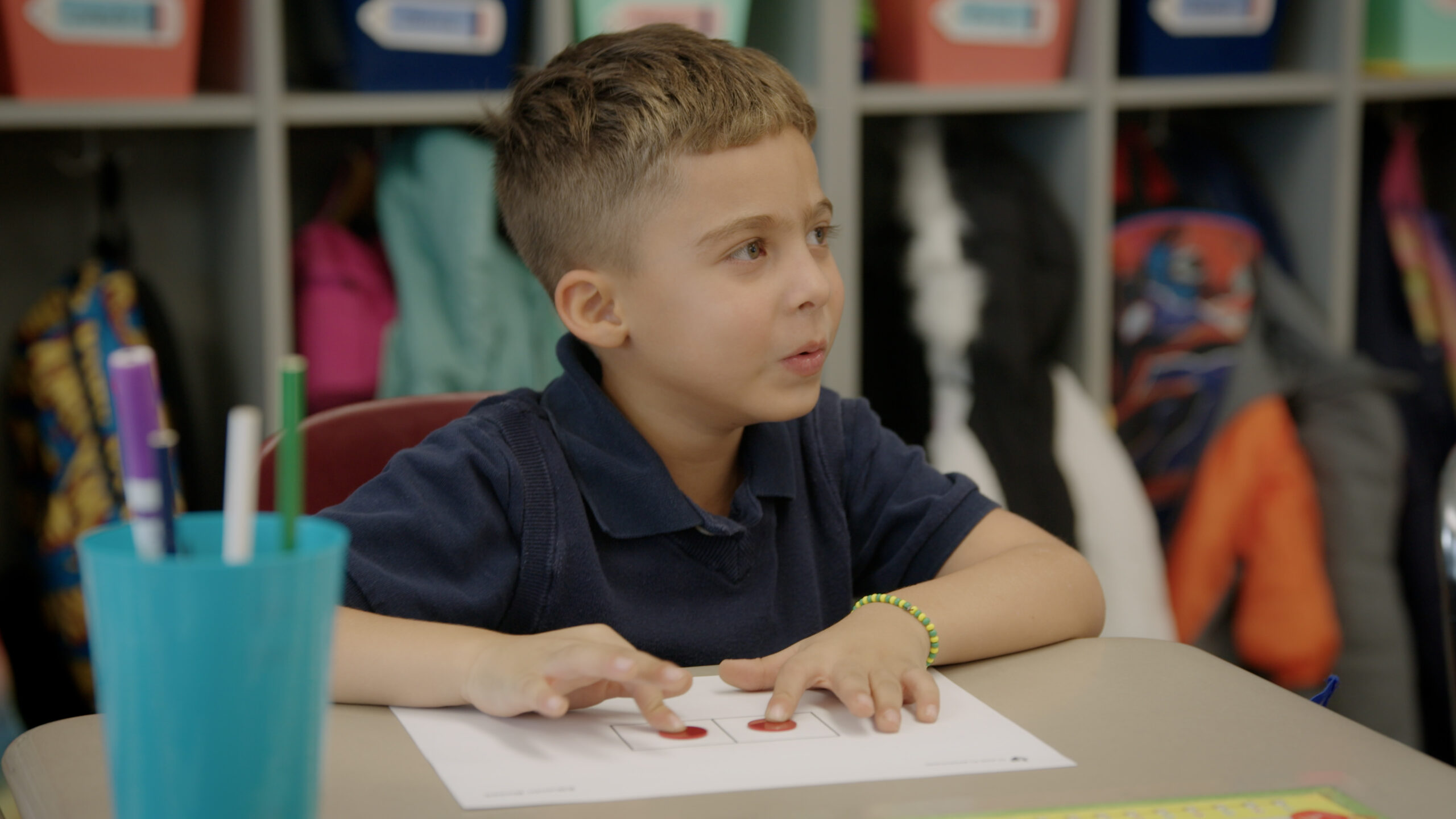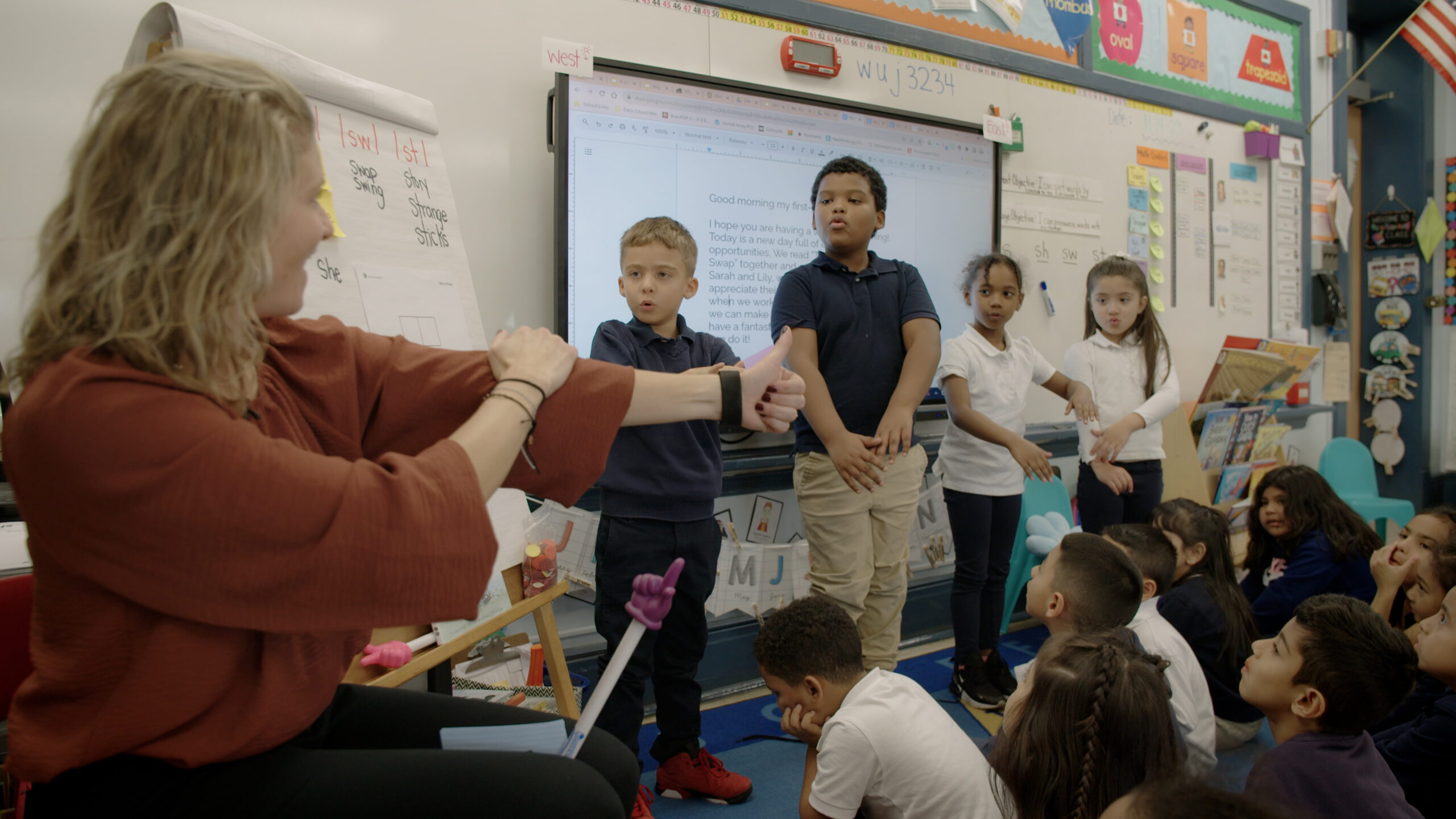Guided Practice During an Explicit Phonics Lesson
Overview
In Part 2 of the explicit phonics instructional components, the teacher introduces a new concept (sound and letter pattern) to students and models pronunciation and expectations. This portion of instruction is often referred to as the “I do.” Next, the students are guided and supported as they work collaboratively to match words to the beginning letter/s. During this guided practice time, the teacher observes and monitors students while providing in-the-moment feedback. This portion of instruction is often referred to as the “ We do” and prepares students for the “you do,” or independent practice.
Key Take-aways
• When introducing a new concept to students, it is crucial we explicitly model what to do using think-aloud and visual aids. During this time, we do not make assumptions about what students may already know, but instead focus on simple and clear demonstration.
• During guided practice, we focus on providing in-the-moment feedback to foster accuracy.
• Extended practice can be utilized to differentiate based on student needs. We may provide extra practice time with scaffolds and extension opportunities.
Transcript
Dr. Ken Kunz: Our video takes you through key sections of a vibrant classroom experience. The teacher models a new skill in three to five minutes, laying the groundwork for understanding. Transitioning to the next section, the We Do phase, students engage in a teacher-led practice, embracing a productive struggle for three to five minutes while providing valuable feedback. Witness a model lesson using /s/ cards, with volunteers actively participating in sorting activities.
Teacher: We have been learning that the letter S makes more than one sound. Yes? Yes. Okay, let’s take a look.
Teacher: We have /s/. Repeat after me.
Student(s): /s/
Teacher: We have /sh/.
Student(s): /sh/
Teacher: /sw/
Student(s): /sw/
Teacher: And /st/.
Student(s): /st/
Teacher: Okay. So, we are going to think of some words that have those different sounds in the beginning of them.
Teacher: We are going to go back to our seats and we are going to look at some words that have and begin with the S, SH, SW, and ST sounds. And we’re going to sort them into different columns, just like you see here on the board.
Teacher: All right, so let’s go over these sounds real quick before we go back to our seats. And we’re going to sort them out. We’re going to sort different words out with these sounds. Ready? Sound?
Student(s): /s/
Teacher: Sound?
Student(s): /sh/
Teacher: Sound?
Student(s): /sw/
Teacher: Sound?
Student(s): /st/
Teacher: Good. Excellent. So you’re going to be listening for those sounds. When you read the words that are on your paper, you’re going to cut them and you’re going to put them under where they belong. Alright?
Teacher: So take a look. You have S, SH, SW, ST, just like what we have up here. Yeah. Yes. So you’re going to cut those first, and you’re going to glue those to the top of the paper. We’re going to do that together. You’re going to turn to your partner, and you’re going to say the word, and then you’re going to figure out, where does it go. Okay. What about this one word? What is this? What is st? Where is it? What’s the word? Say the word for me. What does st say?
Student(s): /st/.
Teacher: And then, /u/, and then, /k/. What’s the word?
Student(s): Stuck.
Teacher: Stuck. Very good.
Student(s): Stuck.
Teacher: So say /sw/
Student(s): /sw/
Teacher: /ing/
Student(s): /ing/
Student(s): /sw/
Teacher: say it again. /sw/
Student(s): /sw/
Teacher: /ing/
Student(s): /ing/
Teacher: Swing.
Student(s): Swing.
Teacher: Swing. Good.
Dr. Ken Kunz: In this video you witnessed the teacher introduce a new concept. The I Do. Providing guided practice. The We Do. Giving the students some time for independent and partner practice. And the You Do. Opportunities for students to work on their own.


